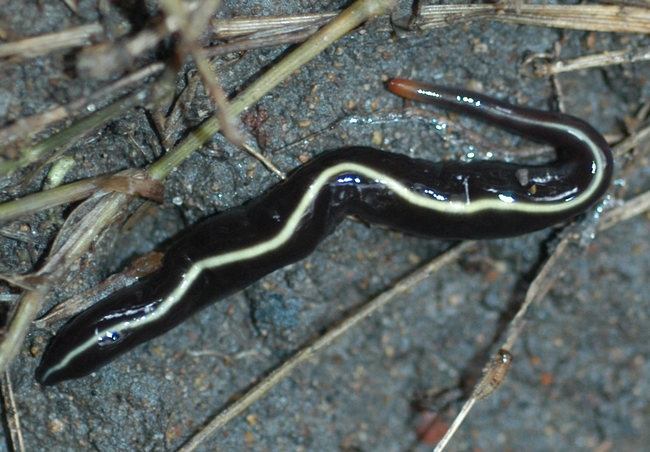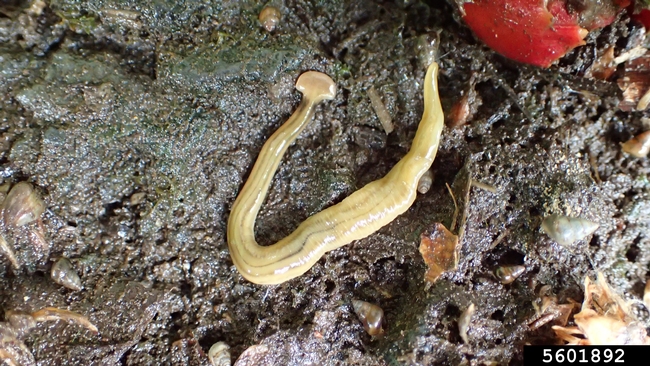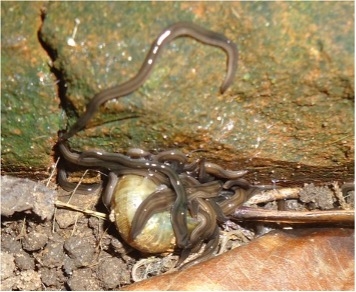
What is that weird wormlike thing in your garden? A slug? An earthworm? It may be neither—it it might be a land planarian. Land planaria are also called terrestrial flatworms and hammerhead worms. They are often colorful, such as the blue garden flatworm (Caenoplana coerulea) or patterned with stripes, like the shovel-headed garden worm (Bipalium kewense).
Land planaria are generalist predators of earthworms, slugs, and other mollusks. They capture prey by wrapping their bodies around it and engulfing the prey with mucous. Planaria mouths are not at the end of their body like most animals, but on the underside near the middle of their body. Unlike slugs, land planaria do not have tentacles (such as eyestalks), which is a useful way to distinguish them. Like snails, they are hermaphroditic, meaning each individual has both male and female reproductive organs and can mate readily with any other worm of the same species. Land planaria can also reproduce by binary fission, which is when one individual planarian splits into two. You may remember an experiment from middle or high school science laboratory where a planarian cut in half regrows into two separate planaria.

These animals need moisture, so they live in wet environments. Examples include under rocks and logs, in plant pots and mulch, under bushes, and along streambanks. In nurseries, they are commonly found under plant pots. After heavy rains, they might be found on sidewalks and driveways.
Do land planaria cause problems?
Land planaria may be considered minor pests, but they don't damage plants or harm people. They can sometimes reduce earthworm populations in natural environments. Land planaria have very few predators since their mucus is distasteful. While some species (B. adventitium and B. kewense) produce a neurotoxin, they cannot inject it into pets or people and are only toxic to small animals when eaten. Some species can carry rat lungworm, an internal parasite. Wash your hands thoroughly after handing land planaria to avoid these problems.
Some land planaria are invasive, but their impacts on the environment and native flora and fauna will depend on the species, their prey preferences, and where they are introduced. In most cases, there is little impact. Invasive land planaria may present problems in the future since it is easy for land planaria to reproduce and spread.
Eradication of land planaria from a landscape is difficult, if not impossible. Cutting up planarians to kill them doesn't work since new individuals will grow from each section. They can be killed with salt or by submerging them in rubbing alcohol, but this is impractical for large numbers of planaria. There are no registered pesticides for land planaria and using a molluscicide to control them is ineffective and may be illegal, since land planaria are flatworms and not snails or slugs (mollusks).
[Originally featured in the Spring 2023 issue of UC IPM's Home & Garden Pest Newsletter]
